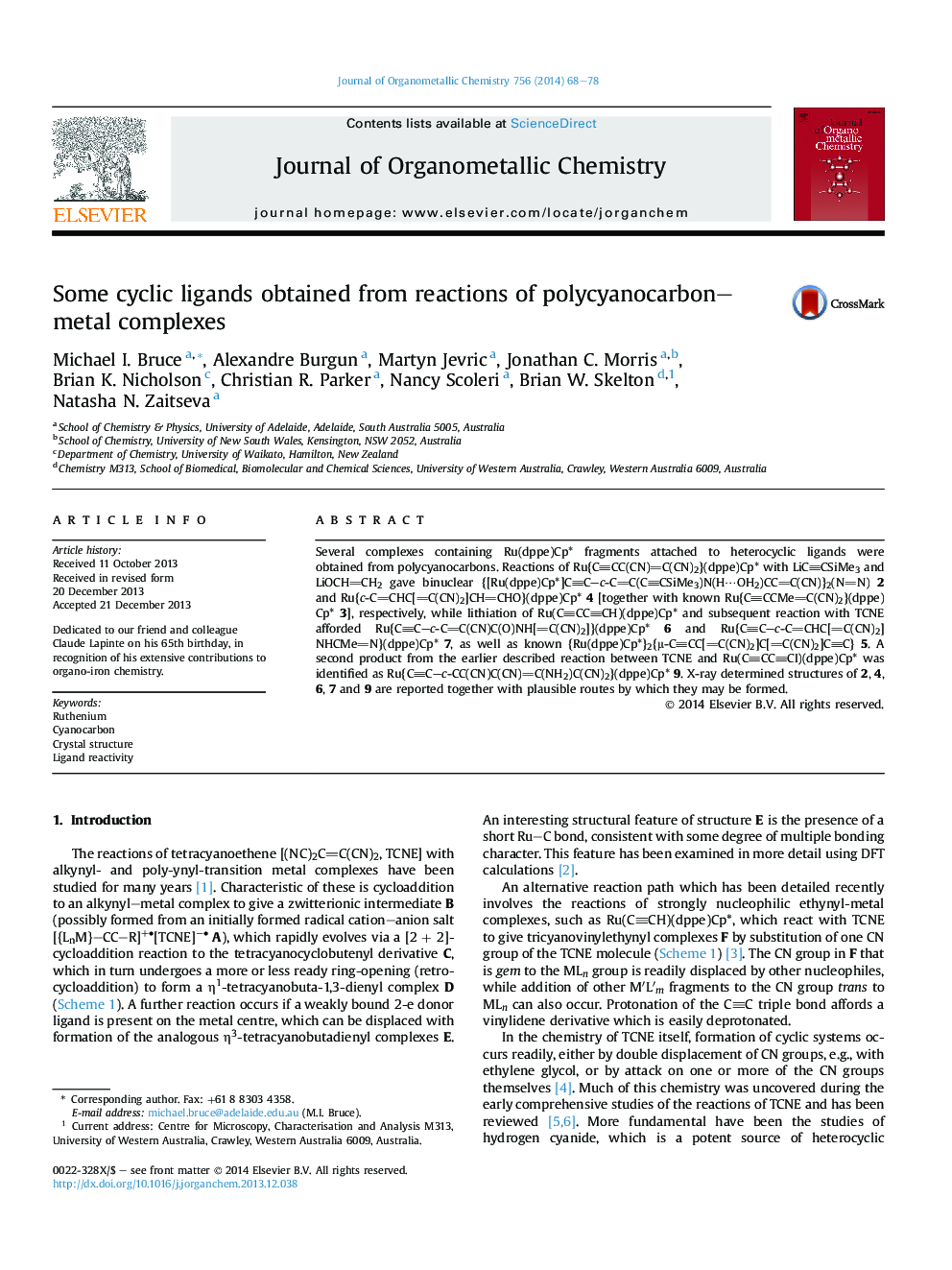| Article ID | Journal | Published Year | Pages | File Type |
|---|---|---|---|---|
| 1324078 | Journal of Organometallic Chemistry | 2014 | 11 Pages |
•Syntheses of Ru(dppe)Cp* complexes containing heterocyclic ligands, formed by attack on CN groups of cyanocarbons.•X-ray structural identification of a dimeric azopyrrole, a dicyanomethylene–pyran and other nitrogen heterocycles.•Iodination of a lithiated diynyl–Ru complex and reaction with TCNE gave a pentasubstituted cyclopentadienyl–ethynyl ligand.
Several complexes containing Ru(dppe)Cp* fragments attached to heterocyclic ligands were obtained from polycyanocarbons. Reactions of Ru{CCC(CN)C(CN)2}(dppe)Cp* with LiCCSiMe3 and LiOCHCH2 gave binuclear {[Ru(dppe)Cp*]CC–c-CC(CCSiMe3)N(H⋯OH2)CCC(CN)}2(NN) 2 and Ru{c-CCHC[C(CN)2]CHCHO}(dppe)Cp* 4 [together with known Ru{CCCMeC(CN)2}(dppe)Cp* 3], respectively, while lithiation of Ru(CCCCH)(dppe)Cp* and subsequent reaction with TCNE afforded Ru{CC–c-CC(CN)C(O)NH[C(CN)2]}(dppe)Cp* 6 and Ru{CC–c-CCHC[C(CN)2]NHCMeN}(dppe)Cp* 7, as well as known {Ru(dppe)Cp*}2{μ-CCC[C(CN)2]C[C(CN)2]CC} 5. A second product from the earlier described reaction between TCNE and Ru(CCCCI)(dppe)Cp* was identified as Ru{CC–c-CC(CN)C(CN)C(NH2)C(CN)2}(dppe)Cp* 9. X-ray determined structures of 2, 4, 6, 7 and 9 are reported together with plausible routes by which they may be formed.
Graphical abstractSeveral complexes containing Ru(dppe)Cp* fragments attached to heterocyclic ligands were obtained from polycyanocarbons by several reactions involving nucleophilic attack of (i) alkynyl anions or (ii) water, followed by intramolecular cyclisations.Figure optionsDownload full-size imageDownload as PowerPoint slide
